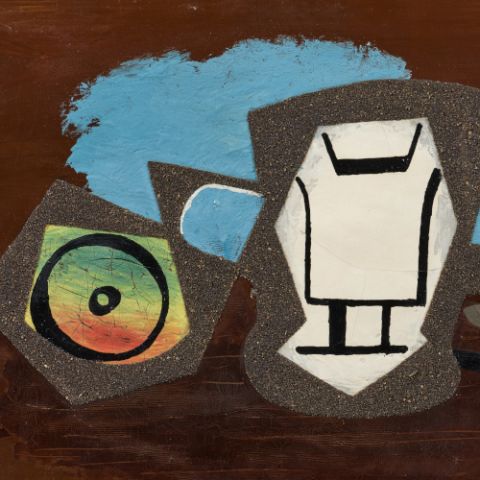
Lot 35 | Karel Appel | Bathing Woman
1921 Amsterdam - 2006 Zurich
Title: Bathing Woman.
Date: 1962.
Technique: Oil on canvas.
Measurement: 162 x 130cm.
Notation: Signed lower centre: appel. Inscribed several times verso: x62-003.
Frame/Pedestal: Framed.
Provenance:
- Galerie Ulysses, Vienna (label)
- Private collection North Rhine-Westphalia
- Exciting exploration by the artist of traditional motifs of great significance in art history
- Attractive format in Appel's brute formal language with a particularly pronounced gesture
Existential freedom and the dissolution of form
The Dutch painter, graphic artist and sculptor Karel Appel achieved worldwide fame as a post-war avant-gardist and founding member of CoBrA, an abstract artists' group founded in Paris in 1948.
In line with the prevailing abstract tendencies, influenced by surrealism and “Art Brut”, the superficial expression of the imagination is at the center of Appel's artistic exploration. His style is determined by a direct, original form of representation, inspired by the art of Picasso, Matisse and Dubuffet. The period, which was characterized by massive upheaval, called for the direct, unmediated realization of the subconscious without the intervention of a reflective, rationalizing consciousness. Nevertheless, the effort towards abstraction, which arose from an existential need for intellectual freedom, did not result in a categorical rejection of the figurative. Rather, Appel always used forms that were based on objects. Nevertheless, his oeuvre shows a dissolution of the boundaries of the object in favor of a strong emotional quality that arises directly from the act of painting, the spontaneous interaction with the material of color, and the mastery of the paint mass. In his compositions, figuration enters into a tense interplay with the pure rhythm of painting, which sometimes discharges in a powerful gesture.
Karel Appel and the Bathers
In the work presented here, Appel takes up the motif of bathers, which has been handed down in art history. While the depictions of bathers from Rembrandt to Cezanne to the expressionists like Kirchner often appeared harmonious and idyllic, Appel gives the subject an eruptive dynamic and emotional depth. The naked figures of the women in waist-deep water seem to be depicted less as real bodies and more as raw, expressive forms. Appel dissolves the form and reassembles it with energetic brushstrokes in bold colors, creating an intense, almost archaic impression of physicality.
On closer inspection, the scene depicted is reminiscent of a detail from Hieronymus Bosch's The Garden of Earthly Delights (Fig. 1), thus pointing to the many art-historical influences that have found their way into Appel's work. Bosch's works - including this monumental triptych created at the end of the 15th century - are teeming with nightmarish creatures. The detail from the Garden of Earthly Delights comes from the eponymous central panel of the triptych, in which humans, animals and mythical creatures live together in harmony – a dimension of content that Appel also repeatedly takes up in his works. The two bathers – enclosed in a bubble-like structure in Bosch's work – are surrounded by a multitude of figures. Particularly striking here is the red sphere to the right of the bathers, whose counterpart also plays a space-filling role in Appel's work. In the foreground, Bosch shows a hybrid creature made up of a human and a mussel, and Appel also features an unidentifiable figure in a corresponding position, with a disturbing undertone to its depiction.
However, in addition to these recognizable elements, much remains unclear: the dark, almost threatening shapes in the background, reminiscent of a nocturnal scenario, open up a space for complex interpretations. This is where Appel's characteristic vagueness comes into play, transporting the viewer into a world between dream and reality.
Appel's work is a testament to his intense engagement with modern painting and the inner conflicts of human existence. With his expressive lines and colors, which push the boundaries of figuration, he challenges a deep, almost physical reaction to his images, while also inviting contemplative reflection on the role of humans in nature.
| Recommend lot |
Conditions of this Lot
32% buyer’s premium on the hammer price
Karel Appel The Netherlands Informel CoBrA Post-War Art Post War 1960s Framed Abstract Painting Oil





